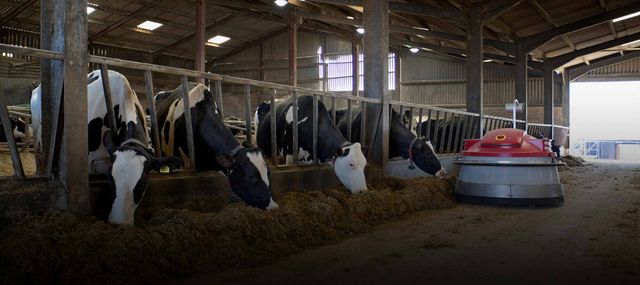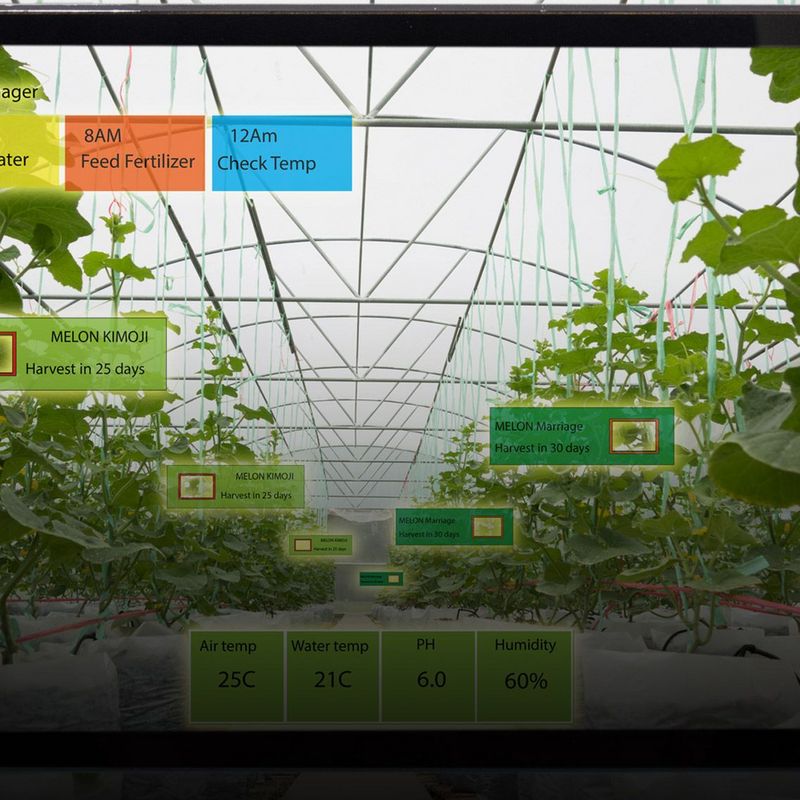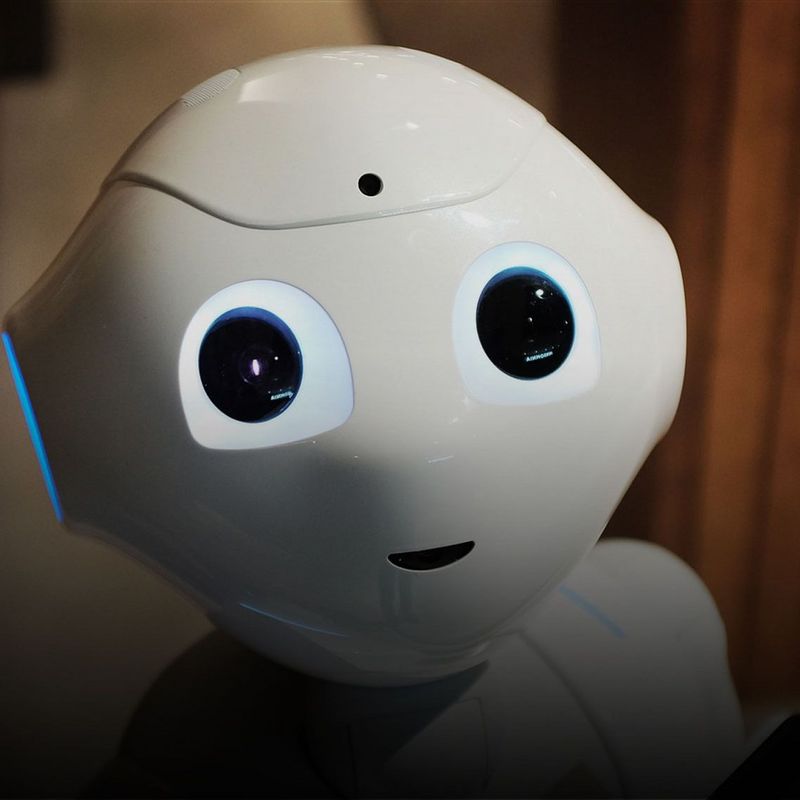24 May 2018
The digitalisation of agriculture is in full swing. But it isn’t just farmers who are supposed to benefit from this development, but animals and consumers too. Milking robots promise to make animal husbandry kinder to livestock, networked farms to improve food safety. In the second part of our series on digital agriculture, we explain how all this could work.
You may well still think of ploughs and horse teams when you hear the term organic farming. But for organic farmer Christoph von Hoegen, ecology and technology are not a contradiction in terms: The use of a milking robot in his cowshed doesn’t just mean that the daily routine of the organic farmer in Stolberg near Aachen no longer revolves around fixed milking times. The cows are also free to move around in the shed. Instead of having to be milked at fixed times, they can wander over to the milking machine independently when prompted by a full udder. This makes for more relaxed animals and less stress in the herd. The systems also record, for example, how often the cows chew the cud and how much exercise they get. This allows farmers to get a more accurate impression than used to be the case of how their livestock are doing and to respond sooner to symptoms of disease. But the use of technology could also optimise husbandry conditions in conventional agriculture. Robots might for example help muck out the stalls and reduce the number of pathogens by improving cleanliness. Feeding robots would for their part make it possible to tailor the feed to individual animals. Better animal welfare through technology is also where Christine Flöter from TÜV NORD sees the potential of digitalising farms. “You can treat the animals as individuals, which never used to be possible,” says the food safety expert.
Along with the number of sensors and other digital technologies on fields and farms, the list of tasks for testing organisations such as TÜV NORD is of course also set to grow. “If these machines are going to function reliably over longer periods, then regular monitoring and testing of the sensors is going to be just as essential as validation of the data they collect,” Christine Flöter explains. After all, the question of whether the highly complex systems can produce reliable results on which decisions can be based is a crucial one not just for the farmers.
At the same time, networked farms are opening up completely new possibilities for certification procedures. In this case, farmers submit to voluntary investigation by independent test organisations, enabling them to show that they meet specific standards in animal husbandry or food safety. Until now, the testers, who are known as auditors, have had to visit the farms and use the documents compiled by the farmer to review the situation, analyse data and systems, and collect samples. A principle that, notwithstanding how thorough everyone is, inevitably has its limitations, as Christine Flöter explains. Even if the auditor doesn’t find any irregularities, “the outcome might well have been different if he had picked another random samples,” says the food safety expert. In the future, the auditors will be able to access all the data from the networked operation from afar and use remote audits to derive a much more complete picture. The idea is for such remote monitoring not to replace site visits but instead to offer a meaningful complement to them – particularly for those areas on the farm which have until now been invisible to the auditors. Sensors or video cameras could in future reveal what is going on in silos or underground channels.
“The sooner the problems are detected, the quicker they can be fixed and possible consequences prevented.”
Transparency from which both consumers and farmers alike will benefit, as Christine Flöter points out: “The sooner the problems are detected, the quicker they can be fixed and possible consequences prevented.” If, for instance, cows eat mouldy feed, this can also contaminate their milk with carcinogenic substances produced by the mould. With costly consequences for the dairy farmers: the milk will be rejected by the dairy, and the farmers will have to dispose of it at their own expanse. An enormous financial loss which could be prevented by sensor-based early warning systems.
The combination of sensor data with what is known as Blockchain technology, a kind of decentralised and, therefore, forgery-proof accounting system, would pave the way to previously unheard-of levels of transparency in the food industry - from the fields or the rearing of livestock all the way through to the supermarket. And this is where Christine Flöter sees the greatest potential of digital agriculture. “The consumer will in the future know what’s going on every step of the way,” she says. The trust eroded by food scandals could be regained and, in the best-case scenario, more scandals be prevented in advance.
But if the digital possibilities for farms are actually going to be realised across the board, improvements need to be made to the infrastructure. In a survey carried out by digital association Bitkom, 39 percent of all farmers mentioned inadequate access to the Internet as a stumbling block on the way to digital agriculture. 42 percent are concerned about IT and data security. "If the Internet of Things is really going to work, misuse of farmers’ data needs to be prevented as effectively as possible,” says Professor Hans W. Griepentrog, agricultural engineer and expert in precision farming at the University of Hohenheim in Stuttgart. Unlike normal companies, after all, farmers can’t set up their own IT security departments to prevent hacker attacks. Worries about the loss of data sovereignty exercise one-third of the farmers questioned – in other words, questions about the ownership of data from smart farms and who is permitted to use them. From Griepentrog’s point of view, therefore, safeguards need to be put in place to ensure that the data can’t simply be passed on or sold by Cloud or sensor providers. “After all, we’re talking here about farmers’ sensitive operational and business data. Which is why they need to retain ownership of their data and determine the conditions for any use of it by third parties,” urges the agricultural scientist.
You may also like
ABOUT
© TÜV NORD
Christine Flöter is head of Business Development at TÜV NORD CERT. Prior to that, the graduate food technology engineer ran the food certification department for over 14 years.
© Griepentrog
Professor Hans-Werner Griepentrog is head of the department of Process Technology in Plant Production at the University of Hohenheim. The mechanical engineer, himself the son of a farmer, develops and optimises measurement methods for agricultural machines with the aim of reducing the use of fertilisers and pesticides to a minimum. In the VertiCRobo project, the expert in precision farming and robotics is working with scientists from different faculties on the issue of how autonomous robot swarms can promote sustainable and bio-diverse agriculture.




